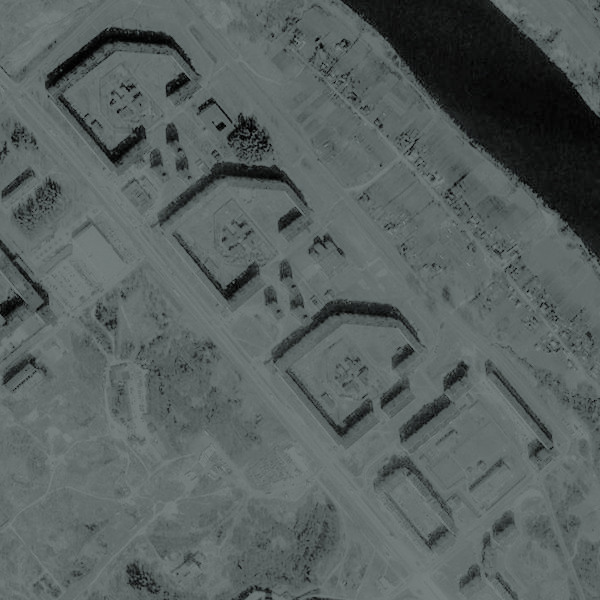Street Without End cycle:
ID: C10

Date:
Since 2018
Introduction:
The cycle is dedicated to Navapolack, where the artist was born. Navapolack is one of the youngest cities in Belarus, which began to be built in 1958 around the city's oil refinery. The city was a Soviet utopia, which did not materialize, and under the new political and economic conditions, the city began to decline. This is also indicated by the construction of the housing blocks in the form of letters USSR, but the last house in the form of the letter R was not completed due to the collapse of the Soviet Union. The main work of the cycle is a video based on selected shots of the feature film Street Without End (1972) by Belarusfilm film studio. It was filmed in Navapolack, which was under construction at the time. For the video, the character on the background of urban space and natural landscapes was "cut out", turned into a ghost. This cycle is about Soviet utopia and its unfulfilled aspirations, urbanism and nature, memory and nostalgia.
Works and events within the cycle:
2018:
Video Street Without End
W60.1-2
︎ technical info
Video
For group exhibition Utopia, a Place Doesn’t Exist, space Canteen XYZ, Minsk, Belarus
Video
For group exhibition Utopia, a Place Doesn’t Exist, space Canteen XYZ, Minsk, Belarus
The video is based on selected frames of the 1972 “Street Without End” film by Belarusfilm Studio. The shooting was carried out in the then under construction city of Novopolotsk, the hometown of the artist. In the USSR, they planned to create a giant industrial center here.
For the video selected frames in which the character was present in a deserted city or park, using the montage of the hero "cut". A film about a certain creature/ghost/bubble in a deserted city, near factories and in a park that dissolved into the river. This work is about Soviet utopia, unfulfilled aspirations, urbanism and nature.
For the video selected frames in which the character was present in a deserted city or park, using the montage of the hero "cut". A film about a certain creature/ghost/bubble in a deserted city, near factories and in a park that dissolved into the river. This work is about Soviet utopia, unfulfilled aspirations, urbanism and nature.

Fragment of the city plan.
Houses were built in the
form of an inscription
of the СССР (USSR) –
the last fourth house did
not have time to be built
before the collapse of the
Soviet Union.
Houses were built in the
form of an inscription
of the СССР (USSR) –
the last fourth house did
not have time to be built
before the collapse of the
Soviet Union.
